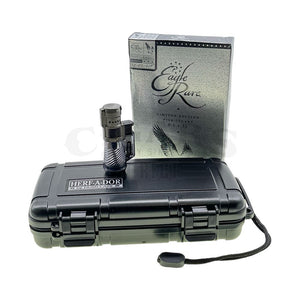Popular Cigar Shapes and Sizes: Exploring Their Impact on Flavor
Cigars, renowned for their rich and diverse flavors, come in a wide array of shapes and sizes. These variations not only enhance the aesthetic appeal of cigars but also play a significant role in the overall smoking experience. Understanding the different cigar shapes and sizes and their influence on flavor can help aficionados make informed choices when selecting their next smoke. In this article, we delve into the world of popular cigar shapes and sizes, exploring how they affect the flavor profile and enjoyment of a cigar.
Vitola: The Art of Size and Shape
The term "vitola" talks about the size and shape of a cigar. It encompasses the length, ring gauge, and overall dimensions of the cigar. The vitola of a cigar is a crucial factor in the blending and construction process. Different vitolas allow the cigar maker to express their creativity and expertise in creating a well-balanced and flavorful smoke. By selecting a specific vitola, cigar enthusiasts can explore different flavor profiles and experiences within a particular blend.
Cigar Shapes: Parejos and Figurados
Cigar shapes can generally be categorized into two common groups: Parejos and Figurados. Parejos refer to traditional cigar formats characterized by a straight cylindrical shape with a flat head and consistent ring gauge from head to foot. Classic shapes like Robusto, Toro, Churchill, and Corona fall under the Parejos category. On the other hand, Figurados, as the name suggests, feature contoured shapes with one or both ends tapering to a narrower ring gauge. This tapered design adds a touch of elegance and uniqueness to the cigar. Figurados can range from traditional formats like Torpedo to more dramatic shapes like Salomon.
Impact of Ring Gauge and Thickness
The ring gauge of a cigar refers to its diameter or thickness, typically measured in 64ths of an inch. The thickness of a cigar affects how hot it burns and the intensity of the flavors experienced. Thicker cigars burn slower and cooler than their thinner counterparts due to the physics of heat distribution. The ratio between the binder, filler, and wrapper tobaccos also influences how a cigar burns.
Wrapper Leaves: The Flavor Influencer
Wrapper leaves play a crucial role in a cigar's flavor profile. They contribute 60% to 80% of the direct flavor perceived during smoking. These leaves undergo meticulous fermentation and aging processes, making them the most visually pristine and expensive components of a cigar. Thicker cigars tend to use a higher ratio of binder and filler tobaccos, which dilutes the influence of flavor from the wrapper leaf. In contrast, thinner cigars with a larger proportion of wrapper leaf offer a more intense and concentrated taste.
Length and Flavor Intensity
The length of a cigar also impacts its flavor intensity. When lighting up a longer cigar, such as a Churchill or Double Corona, the heat from the foot of the cigar takes longer to reach your palate compared to shorter sizes like Robusto or Petit Corona. The distance between the lit end and the palate affects how quickly the flavors intensify. A longer cigar allows for a more gradual flavor development, while a shorter one delivers a quicker and more concentrated taste experience.
Exploring Different Formats
To illustrate the impact of shape on flavor, let's consider an example. The San Cristobal Revelation, blended by Pepin Garcia, offers a wonderful profile of almonds, cocoa powder, black pepper, and cedar. In the traditional Toro format, known as the Legend (6.25 x 52), the flavors unfold beautifully. The ultra-thick Leviathan (6.5 x 64), made from the same blend, burns much slower, resulting in a less concentrated taste and an extended smoking time.
The Rise of Ring Gauges
Trends in cigar sizes come and go, reflecting the ever-evolving preferences of enthusiasts. While the popularity of slender Lancero cigars has waned, demand for larger ring gauges continues to grow. Cigar lovers are often drawn to unique and innovative shapes that capture attention. One such example is the Nub series, featuring short and fat cigars with dimensions like 4 x 60. Initially surprising, these cigars have gained widespread recognition and are now readily available in various blends.
The Importance of Experimentation
For many cigar enthusiasts, the pursuit of the perfect smoking experience involves experimenting with different formats. Smoking a favorite blend in various sizes can reveal nuances and complexities that may go unnoticed when limited to a single format. It allows enthusiasts to find the ideal balance between the cigar's blend and its shape, enhancing their overall enjoyment.
Cigar shapes and sizes significantly contribute to the flavor profile and overall smoking experience. Whether you prefer the classic Parejos or the contoured elegance of Figurados, each shape offers a unique smoking journey. Factors such as ring gauge, length, and wrapper leaf ratio influence burn characteristics and flavor intensity. By exploring different cigar formats and understanding their impact, aficionados can elevate their enjoyment and appreciation of the diverse world of cigars.
In the realm of cigars, the choices are vast, and the journey of exploration never-ending. So, next time you reach for a cigar, consider not only the blend but also the shape and size, for they hold the key to unlocking a truly memorable smoking experience.















